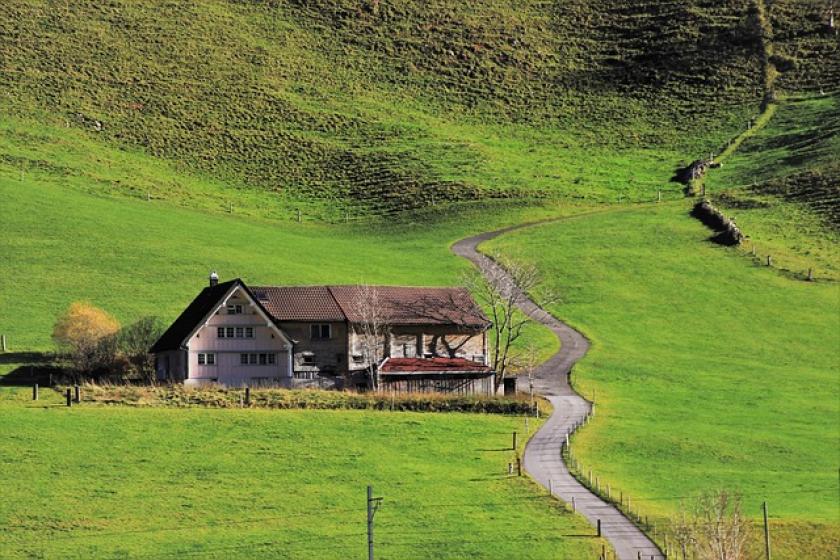How Rural America is Looking to Close the Digital Divide
As fiber technologies continue to evolve, ultimately, communities themselves may be the key to closing the digital divide faced in many rural areas.
February 1, 2023

For regional and rural households across America, the digital divide has been a way of life for decades now. Since the dawn of the internet, those in rural areas have suffered through lower speeds more so than their urban counterparts.
A 2019 study from The Harvard Joint Center for Housing Studies shows how access in rural areas is still severely limited: rural households with school-age kids were least likely to have high-speed internet, especially in the South, where 29 percent of households lacked high-speed internet, compared to 25 percent in the West, 24 percent in the Midwest, and 15 percent in the Northeast. The issue was exacerbated by the pandemic, with a Pew survey finding that a third of low-income households reporting difficulty paying for home internet service.
The reason for the divide is economics. Rolling out expensive fiber-based infrastructure and equipment to homes in sparsely populated rural areas is unfeasible to do for service providers. Customers are fewer, making a positive Return On Investment (ROI) a much longer-term proposition, with some areas never really breaking even. Furthermore, even if service providers did rollout fiber to the homes of rural areas and tried to recoup that cost through higher subscription packages, the cost alone would prevent many in underserved areas from taking up the package, further limiting the potential to achieve an ROI.
In some cases, this means the digital divide is leaving rural areas even further behind as metro hubs can now enjoy more flexible working arrangements and benefits such as home schooling and telehealth services due to their access to high-speed broadband.
Local efforts deliver results
It's now imperative that rural municipalities take it upon themselves to close the divide themselves, which, as we've detailed, is not an easy proposition for sparse areas with relatively few residents.
However, there are some excellent examples where rural providers are showing success and helping eliminate the digital inclusion gap, offering promise for other rural areas.
Rural Alabama is a state that leans on cooperatives, and Cullman Electric is one of the first co-ops to be formed in the state, now sporting 45,000 member accounts across about 1,000 square miles of Northern Alabama, primarily in Cullman and Winston counties. In the 1930s, it was the first co-op to provide electricity to its members. Cullman Electric recognized that the lack of broadband connectivity was having a negative impact on the residents in its service area. It knew it would need much more capacity to deliver high-speed fiber internet to its residents, particularly after traffic surges driven by the pandemic.
So, it launched Sprout Fiber Internet, a gigabit broadband service that brings Fiber to the Home (FTTH) of its rural members.
How did they do it, given everything we have just discussed around ROI and expense?
As an electricity utility, Cullman Electric already had an Operational Technology (OT) platform in place that had network connectivity in place that they used to operate and monitor the electric power system. By upgrading and augmenting the network with modern fiber-optic technology, they created a state-of-the-art middle-mile infrastructure that was readily able to accommodate the addition of broadband traffic. With a stated goal to offer broadband customers 300 Mb/s or 1 Gb/s packages, Cullman Electric needed to build a middle-mile solution between its substations with the scalability to meet its customers' demands.
A 100G middle mile aggregation solution was the clear choice. To accomplish this, Cullman Electric implemented a scalable 100G-200G middle mile backbone for its mission-critical OT traffic while aggregating its Gigabit Sprout Fiber Internet broadband traffic in a converged solution. It also leveraged a target 10G Passive Optical Network (PON) solution, which leverages fiber splitters to achieve connectivity to a greater number of end users.
The residents of Dryden in New York State also faced connectivity issues. Its citizens had been making do with slow and spotty internet—or sometimes no internet at all—and were forced to go to libraries or coffee shops for more consistent connections. So, town officials put in motion a municipal broadband project aimed at providing faster, affordable internet access to everyone, with fiber access for every residence and business in the township.
The town implemented a network that leveraged an active Ethernet and PON while allowing for the scalable adoption of future technologies down the road, such as private 5G for smart cities. The openness of the network-enabled third-party interoperability capabilities, thus ensuring network diversification, would be simpler for Dryden in the future. Dryden Fiber, as the network will be known, is set to launch soon.
These rural communities are usurping the network providers in favor of their own to close the digital divide. They’re leveraging what they have by way of existing infrastructure along with evolutions in technology – such as PON enabling greater capacity than ever before and a shift towards virtualized infrastructure and thus eschewing the need for expensive hardware-- to lower the costs for deployment and for its community to access fast and consistent internet.
While service providers understandably must deliver ROI or answer to shareholders, the only people municipalities must answer to are those of its community. And while costs are always a factor, they aren't the barrier to implementation when driven by municipalities or co-ops. As fiber technologies continue to evolve, ultimately, the communities themselves may be the key to closing the divide with the big smoke at last.
Steve Alexander is Chief Technology Officer at Ciena Corporations.
Related articles:
About the Author
You May Also Like




